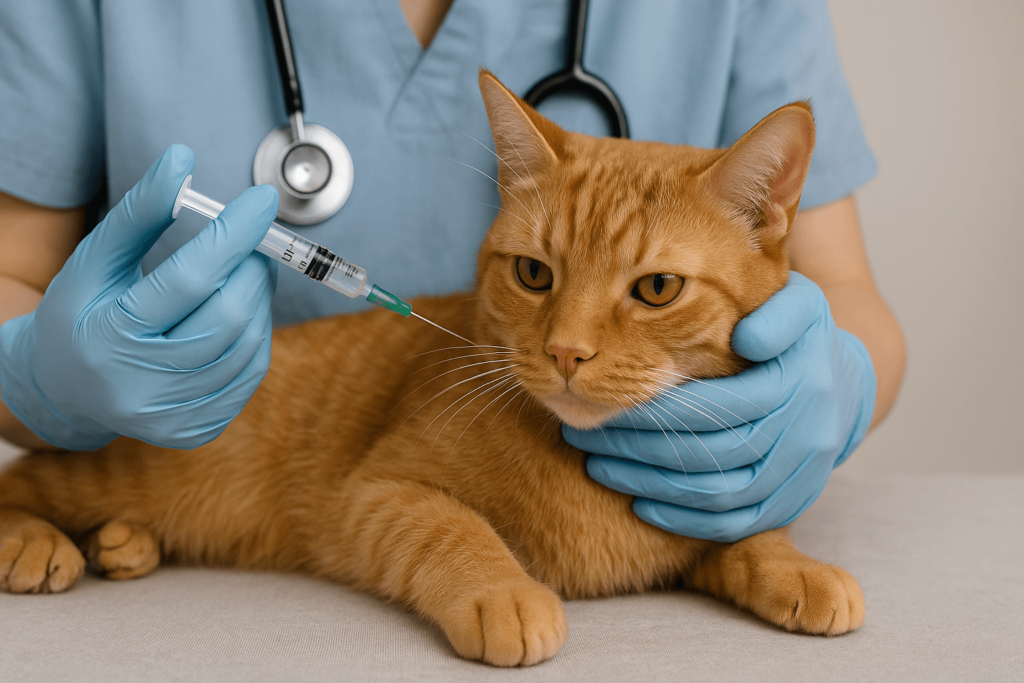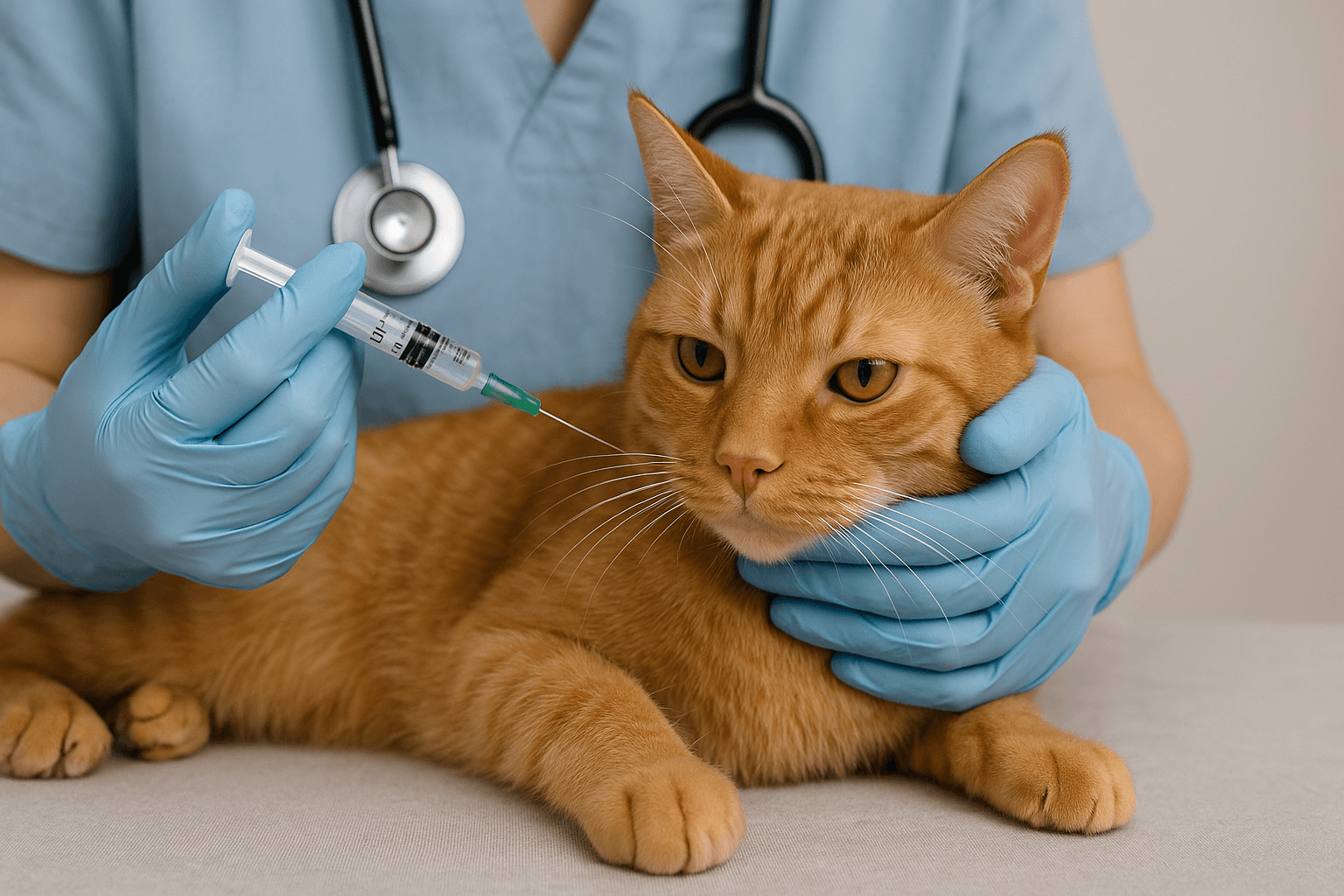FIP Treatment for Cats: Understanding and Managing This Challenging Condition
Feline Infectious Peritonitis (FIP) is a devastating and often fatal disease caused by a mutated form of the feline coronavirus. While it has long been considered incurable, recent advancements in veterinary medicine have provided new hope for cat owners facing this diagnosis. FIP primarily affects young cats and those with weakened immune systems, manifesting in two forms: wet (effusive) and dry (non-effusive).
Understanding the symptoms, treatment options, and supportive care measures is crucial for managing this complex condition. In this blog post, we’ll explore everything you need to know about FIP treatment, empowering you to make informed decisions for your beloved feline companion.
Understanding FIP: Causes and Symptoms
FIP is a challenging condition that requires early recognition to improve outcomes. Familiarizing yourself with its causes and symptoms can help you identify potential issues sooner rather than later.
Causes of FIP:
FIP develops when a common feline coronavirus mutates within a cat’s body, triggering an abnormal immune response. Not all cats exposed to the virus will develop FIP.Wet (Effusive) FIP Symptoms:
This form is characterized by fluid accumulation in the abdomen or chest, leading to bloating, difficulty breathing, and lethargy.Dry (Non-Effusive) FIP Symptoms:
The dry form involves granulomas forming on organs, causing weight loss, fever, neurological issues, and vision problems.Risk Factors:
Kittens, older cats, and those in multi-cat environments are at higher risk due to increased exposure to the coronavirus.Diagnostic Challenges:
Diagnosing FIP can be difficult because its symptoms mimic other diseases, requiring thorough testing by a veterinarian.
Recognizing these signs and understanding the underlying causes is the first step toward effective management and treatment.

Current Treatment Options for FIP
While FIP was once considered untreatable, recent breakthroughs have introduced promising therapies that offer hope for affected cats. Here’s an overview of available treatments.
Antiviral Medications:
Drugs like GS-441524 and remdesivir derivatives target the virus directly, helping many cats achieve remission.Supportive Care Measures:
Fluid therapy, nutritional support, and anti-inflammatory medications can alleviate symptoms and improve quality of life.Experimental Treatments:
Clinical trials and off-label medications are being explored to expand treatment options for resistant cases.Immune System Modulation:
Some veterinarians use immunosuppressive drugs to manage excessive inflammation caused by the immune response.Monitoring Progress:
Regular check-ups and lab tests are essential to track the effectiveness of treatment and adjust protocols as needed.
These advancements highlight the importance of consulting a vet who specializes in FIP to explore the best course of action for your cat.
Check this guide 👉Cat Mouth Black Fungus Treatment: Best 7 Expert Tips!
Check this guide 👉Cat Blindness Treatment: Best 7 Expert Tips!
Check this guide 👉Cat Ear Infection Treatment: Best 7 Expert Tips!
Symptoms of Wet FIP | Symptoms of Dry FIP |
|---|---|
Abdominal swelling (fluid buildup) | Weight loss |
Difficulty breathing | Persistent fever |
Lethargy | Neurological issues (e.g., seizures) |
Jaundice (yellowing of skin/gums) | Vision problems |
Pale gums | Organ dysfunction |
Supportive Care Strategies for Cats with FIP
In addition to medical treatments, supportive care plays a vital role in improving the comfort and well-being of cats battling FIP. These strategies complement professional interventions.
Nutritional Support:
Provide high-quality, easily digestible food to ensure your cat receives adequate nutrition despite reduced appetite.Hydration Management:
Encourage water intake or administer subcutaneous fluids under veterinary guidance to prevent dehydration.Environmental Comfort:
Create a stress-free space with cozy bedding and minimal disturbances to promote rest and recovery.Pain Management:
Work with your vet to address any pain or discomfort your cat may experience during treatment.Regular Monitoring:
Track changes in behavior, appetite, or physical condition to report back to your veterinarian promptly.
By focusing on these supportive measures, you can enhance your cat’s quality of life while undergoing FIP treatment.
Preventive Measures to Reduce FIP Risk
Although FIP cannot always be prevented, certain steps can reduce the likelihood of infection and minimize risks in multi-cat households.
Vaccination Awareness:
While no vaccine guarantees complete protection against FIP, some may reduce the severity of infection if administered correctly.Good Hygiene Practices:
Regularly clean litter boxes and feeding areas to minimize viral transmission among cats.Minimize Stress:
Stress weakens the immune system, increasing susceptibility to FIP; provide enrichment and stability in your cat’s environment.Limit Overcrowding:
Avoid housing too many cats together, as overcrowded conditions heighten the spread of coronaviruses.Routine Veterinary Check-Ups:
Early detection of illness through regular vet visits can help manage health risks before they escalate.
Proactive prevention and responsible pet ownership can significantly lower the chances of FIP affecting your feline family.
Emotional Impact of FIP Diagnosis
Receiving an FIP diagnosis can be emotionally overwhelming for cat owners. Understanding how to cope and support your pet is key to navigating this difficult journey.
Acknowledge Your Emotions:
It’s normal to feel grief, fear, or frustration. Allow yourself time to process these feelings without judgment.Seek Support Groups:
Online communities and forums connect you with others who understand the challenges of caring for a cat with FIP.Focus on Quality Time:
Spend meaningful moments with your cat, creating memories that celebrate their unique personality and spirit.Educate Yourself:
Learning about FIP empowers you to make informed decisions and advocate for your cat’s needs confidently.Practice Self-Care:
Taking care of your own mental and physical health ensures you’re better equipped to care for your pet.
Embracing these emotional strategies helps you navigate the ups and downs of living with a cat diagnosed with FIP.
Financial Considerations for FIP Treatment
Treating FIP can be financially demanding, but there are ways to manage costs without compromising your cat’s care.
Research Affordable Options:
Investigate clinics offering discounted services or payment plans tailored to pet owners’ budgets.Crowdfunding Assistance:
Platforms like GoFundMe allow friends, family, and strangers to contribute toward your cat’s medical expenses.Pet Insurance Benefits:
If you have pet insurance, review your policy for coverage related to chronic illnesses like FIP.Generic Medication Alternatives:
Ask your vet about generic versions of antiviral drugs, which may be more affordable than branded options.Prioritize Essential Treatments:
Focus on critical interventions first, such as antivirals and supportive care, to maximize your resources.
By exploring these financial avenues, you can ease the burden of treatment costs while prioritizing your cat’s well-being.
Long-Term Care for Cats in Remission
Cats who enter remission from FIP require ongoing attention to maintain their health and monitor for potential relapses.
Regular Vet Visits:
Schedule routine check-ups to detect any signs of recurrence early and adjust care plans accordingly.Monitor Behavior Changes:
Watch for shifts in appetite, energy levels, or mobility, which could indicate underlying issues.Maintain a Balanced Diet:
Continue providing nutrient-rich meals to support your cat’s immune system and overall vitality.Provide Mental Stimulation:
Engage your cat with toys, puzzles, and interactive play to keep them mentally sharp and happy.Stay Vigilant About Hygiene:
Keep living spaces clean and sanitized to minimize exposure to pathogens that could weaken immunity.
With dedication and vigilance, long-term care can help extend your cat’s remission period and ensure a fulfilling life post-treatment.
Frequently Asked Questions About FIP Treatment
Is FIP curable?
Recent treatments like GS-441524 show promise, but outcomes vary depending on the cat’s condition and response to therapy.
How much does FIP treatment cost?
Costs vary widely based on the treatment protocol, ranging from hundreds to thousands of dollars.
Can FIP recur after treatment?
Relapses are possible, but ongoing monitoring and follow-up care can help manage recurrence risks.
What should I do if I suspect my cat has FIP?
Contact your veterinarian immediately for diagnostic testing and guidance on next steps.
Are certain breeds more prone to FIP?
While any cat can develop FIP, purebred cats and those in high-density environments may face higher risks.
A Message of Hope for Cats Battling FIP
While FIP remains a formidable challenge for cat owners and veterinarians alike, advancements in treatment and supportive care have transformed what was once considered a hopeless diagnosis. By staying informed, working closely with your vet, and providing compassionate care, you can give your cat the best chance at recovery and improved quality of life. Remember, every small effort counts—whether it’s ensuring proper nutrition, maintaining a stress-free environment, or exploring cutting-edge therapies. Together, we can continue to push the boundaries of feline healthcare and bring hope to families navigating the complexities of FIP.
Cat Fever Treatment: Best 7 Expert Tips! Discover expert advice on identifying, managing, and treating fever in cats to ensure their quick recovery and well-being.
Understanding Meloxicam for Cats: Best 7 Expert Tips! Learn how to safely administer meloxicam, manage side effects, and ensure your cat's comfort with expert advice on feline pain relief.
Amoxicillin for Cat UTI: Best 7 Expert Tips! Discover safe usage, dosage guidelines, and expert advice on treating feline urinary tract infections effectively with amoxicillin.
Understanding Cat Cancer Treatment: Best 7 Expert Tips! Discover expert advice on managing feline cancer, from early detection to treatment options, ensuring your cat’s health and comfort.





